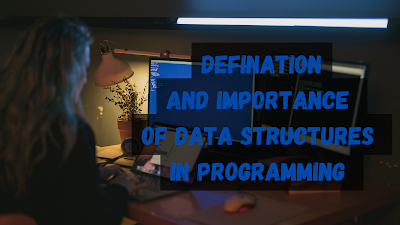From Bugs to Perfection: The Power of Software Testing in Software Engineering
SOFTWARE ENGINEERING
Software engineering is a discipline that involves the systematic approach, principles, methods, and techniques used in designing, developing, testing, deploying, and maintaining software systems. It encompasses a wide range of activities and processes aimed at creating high-quality software products that meet user requirements, are reliable, scalable, and maintainable. Learning software engineering will enhance your career in coding field. To learn about coding, programming or software engineering you can visit many of the best coding institute Delhi.
Software engineering combines elements of computer science, mathematics, and engineering principles to manage and control the complexity of software development. It focuses not only on coding and programming but also on the entire software development life cycle, including requirements gathering, analysis, design, implementation, testing, deployment, and maintenance.
KEY ASPECTS OF SOFTWARE ENGINEERING
Requirements Engineering: Gathering, analyzing, documenting, and managing the functional and non-functional requirements of the software system. This involves understanding user needs, translating them into specifications, and ensuring they are complete, consistent, and testable.
Software Design: Creating a blueprint or architectural design of the software system that defines its structure, components, modules, interfaces, and interactions. It involves making design decisions to satisfy the requirements and ensure scalability, maintainability, and extensibility.
Software Construction: Implementing the software design by writing code in a programming language. This phase involves following coding standards, employing best practices, and using appropriate development tools to create efficient and reliable software components.
Software Testing: Conducting various testing activities to identify defects, errors, and ensure that the software meets the specified requirements. Testing includes unit testing, integration testing, system testing, acceptance testing, and other specialized testing techniques.
Software Deployment: Preparing the software for release and deploying it in the production environment. This involves installation, configuration, and setup of the software system, ensuring its compatibility with the target environment.
Software Maintenance: Performing ongoing maintenance activities, such as bug fixing, updates, enhancements, and troubleshooting, to ensure the software remains functional, secure, and up-to-date over its lifecycle.
Software Project Management: Managing the software development process, including planning, scheduling, resource allocation, risk management, and tracking progress to deliver the software within defined timelines and budgets.
Software Quality Assurance: Implementing quality assurance practices throughout the software development process to ensure that the software meets quality standards, adheres to best practices, and satisfies user expectations.
SOFTWARE TESTING IN SOFTWARE ENGINEERING
Software engineering emphasizes systematic approaches, rigorous documentation, collaboration, and adherence to established software engineering methodologies and best practices. It aims to ensure the development of software systems that are reliable, maintainable, scalable, and meet user needs in terms of functionality, usability, performance, and security.
KEY ASPECTS OF SOFTWARE TESTING IN SOFTWARE ENGINEERING
Software testing in software engineering
It is an integral part of the software development lifecycle (SDLC). It is a systematic and structured process that aims to identify defects, errors, and vulnerabilities in software systems to ensure their quality, reliability, and conformance to requirements. Software testing in software engineering involves the following key aspects:
Test Planning and Strategy: Test planning involves defining objectives, scope, and test strategies for the testing process. It includes identifying test objectives, selecting appropriate test techniques, and determining the required resources and timelines.
Test Design: Test design involves creating detailed test cases and test scenarios based on functional and non-functional requirements. Test cases are designed to cover various aspects of the software, including positive and negative scenarios, boundary conditions, and exception handling.
Test Execution: Test execution involves running the designed test cases and scenarios against the software. This can be done manually by testers or through automated testing tools. The actual results are compared with the expected results to identify any discrepancies or failures.
Defect Management: Defect management involves logging, tracking, and managing defects found during testing. Defects are recorded in a defect tracking system, and their lifecycle includes steps like defect identification, prioritization, assignment, fixing, and verification.
Regression Testing: Regression testing ensures that changes or fixes in the software do not introduce new defects or cause unexpected issues in existing functionalities. It involves retesting previously tested areas to ensure they still function as expected.
Test Reporting and Metrics: Test reporting involves documenting and communicating the testing activities, test results, and metrics to stakeholders. Test metrics, such as test coverage, defect density, and test execution status, provide insights into the quality of the software and progress of testing.
Test Automation: Test automation involves using specialized tools and frameworks to automate the execution of repetitive and time-consuming test cases. Automation can speed up the testing process, increase test coverage, and improve efficiency.
Continuous Integration and Testing: In modern software development practices, continuous integration and testing are often employed. This involves integrating code changes frequently, running automated tests, and detecting issues early in the development cycle.
Software testing plays a critical role in ensuring the delivery of high-quality software products.
It helps identify defects, improve software reliability, enhance user satisfaction, and reduce the risk of failures or security breaches. Testing is an iterative process, and feedback from testing activities is used to refine and improve the software throughout the development lifecycle.
Learning Software engineering is a part of Programming. Learning programming and coding has become easy as there are many coding classes available in the town. Joining the best Coding Classes in Delhi will help you discover your dreams in the coding career.






Comments
Post a Comment